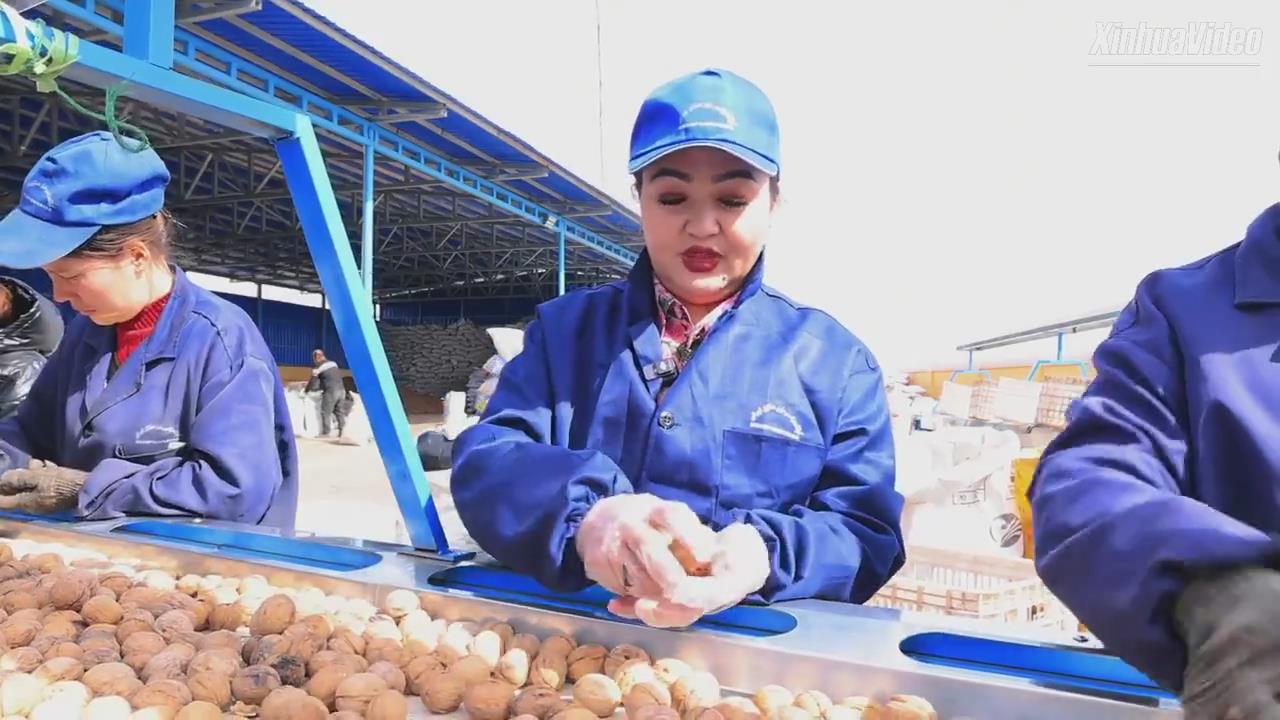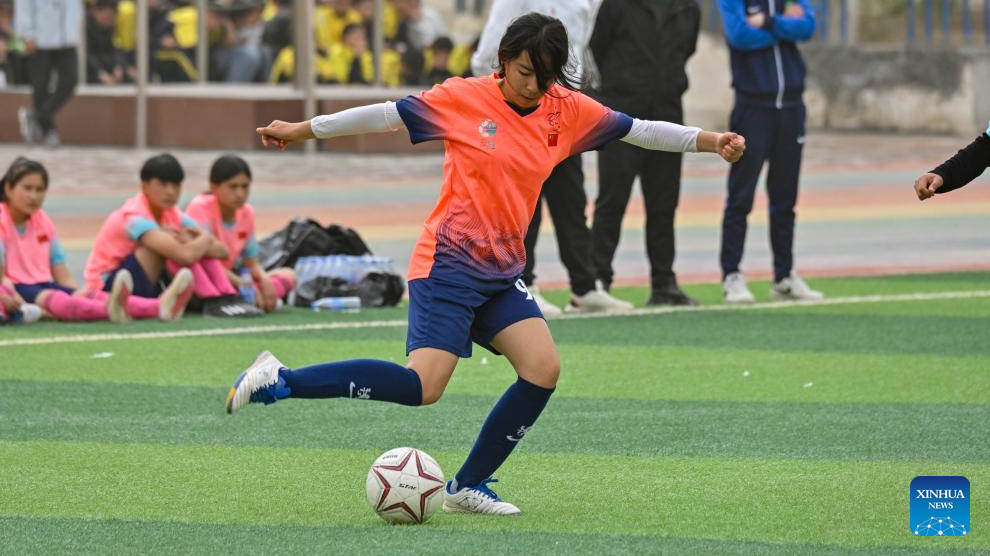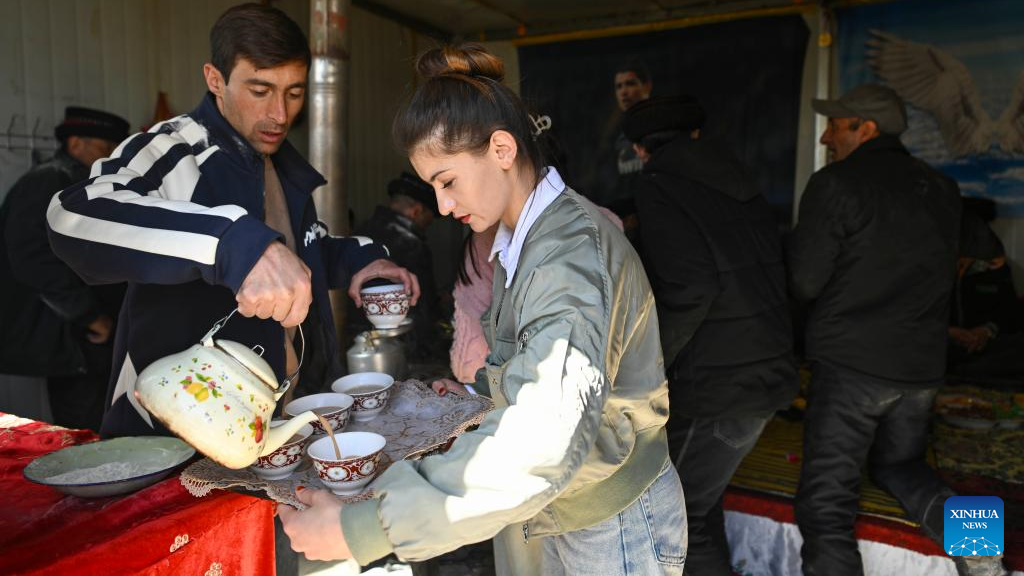Editor's note: Traditional arts and crafts are supreme examples of Chinese cultural heritage. China Daily is publishing this series to show how master artisans are using dedication and innovation to inject new life into heritage. In this installment, we explore the carpet craft in Xinjiang.
Stepping into a random traditional household in Northwest China's Xinjiang Uygur autonomous region, carpets are usually the most eye-catching and distinct interior decorations.
Superior wool meticulously woven with intricate patterns bursts with vibrant colors. These objects of beauty are used by different ethnic groups in Xinjiang to cover floors and sofas or adorn walls, serving as both insulation and decoration.
Xinjiang is among the birthplaces of such unique carpets.
Archaeological evidence tracing the artistry of wool handmade carpet dates back over 2,000 years in the region.
Carpet fragments from the late Western Han Dynasty (206 BC-AD 24) unearthed from the ruins of the ancient city of Loulan in southern Xinjiang are among the earliest known carpet artifacts discovered in China. The findings attest to the local origins of this craft.
Xinjiang carpets often feature basic motifs of plants, flowers, fruits, branches, leaves and animals, expanded upon and transformed with geometric patterns.
Traditional designs include anargul (pomegranate flower), bash chichak gul (five-petaled flower) and chachma gul (scattered flower). The carpets typically adopt a full-border composition.
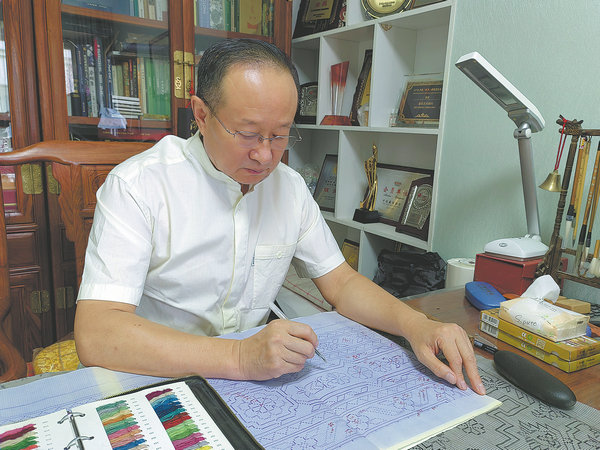
Pei Ming, 66, an artist in Urumqi, has been researching the history of Xinjiang carpets. [Photo by XING WEN/CHINA DAILY]
As an ancient Silk Road crossroads, Xinjiang produces carpets reflecting diverse cultural influences.
"For instance, the idea of using rose patterns in carpets comes from Egypt while mountain peak designs originate from Turkiye and Iran," says Pei Ming, 66, a craft artist from the Xinjiang Uygur autonomous region folk literature and art association.
"Meanwhile, the peony and lotus patterns on Xinjiang carpets are inspired by popular embroidery designs from the Central Plains of China."
Pei has been researching the history and craft of Xinjiang carpets.
The inclusive beauty of Xinjiang carpets has won international acclaim since ancient times, he says.
During the Yuan Dynasty (1271-1368), Samarkand, an ancient city in Uzbekistan, served as the distribution center for carpets in Central Asia. By the 16th century, Xinjiang carpets had already entered European markets.
The production of handmade carpets in the region flourished during the Qing Dynasty (1644-1911) when carpets produced in Xinjiang's Hotan prefecture became essential tribute items for the imperial court.
Hotan carpets are made from high-quality semicoarse wool from a local breed of sheep, characterized by a rough yet nonsticky texture with moderate thickness, good elasticity and great resilience.
The wool is spun into yarn and dyed into vibrant colors, then twisted together in warp, weft and pile.
To ensure output, patterns and color schemes are designed before workers begin weaving.
Xinjiang carpets are mostly woven with vertical looms. Warp and weft threads are intertwined to create a base, followed by knotting small wool knots on the warp with the pile. A carpet with thousands of knots can withstand the test of time.
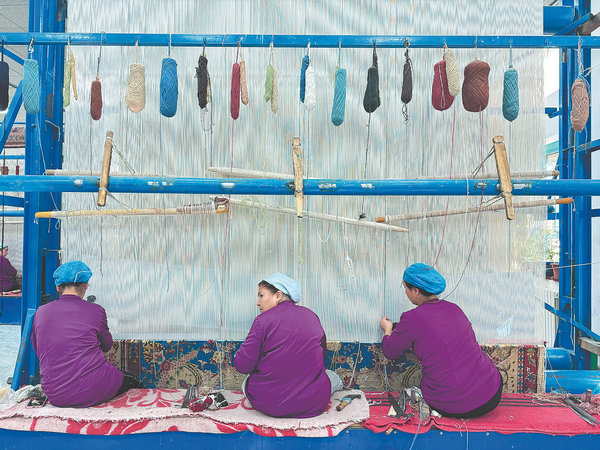
Carpet weaving is time-consuming, and sometimes it requires the collaboration of several craftspeople. [Photo by XING WEN/CHINA DAILY]
Even with partial damage, the life span of the carpet as a whole remains unaffected. This technique also gives rise to crisp patterns on both sides, adding to its enduring beauty.
A stunning piece of handmade wool carpet requires several months of arduous labor by skilled weavers. Even today, this ancient time-consuming, carpet-weaving technique continues to be passed down from generation to generation in Hotan.
Culture and industry
At Nakixwan Carpets, a handmade carpet company in Hotan, 63-year-old designer Ilham Jumar first sketches the patterns on paper with a pencil.
Different areas are marked with numbers representing specific colors. These drawings are hung on the loom and weavers follow them to create the carpet. The size and density of a carpet determine the production time. A higher density, with more knots per square meter, requires more time.
Growing up in Hotan, Ilham loved drawing from a young age. Many of his neighbors ran home-based carpet workshops. Immersed in this environment, he studied carpet design for a year at Xinjiang Arts University in Urumqi at age 19. He then began his career as a carpet designer and is now a well-known designer in the area.
He has been working for Nakixwan Carpets for years.
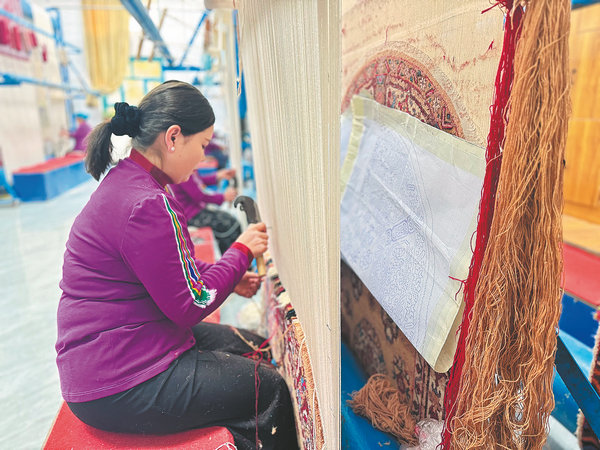
Carpet weaving is time-consuming, and sometimes it requires the collaboration of several craftspeople. [Photo by XING WEN/CHINA DAILY]
The company was once a small family workshop. In 2008, after traditional Uygur crafting techniques for handmade carpets were added to the national-level intangible cultural heritage list by the State Council, the workshop leveraged support policies to upgrade into a company, according to Mawlan Muhtar, the manager of Nakixwan Carpets.
It now boasts more than 100 weavers and a branch in Lop county.
Mawlan, 32, who studied computer science at Xinjiang University in Urumqi, planned to return to his hometown of Hotan to start a business after graduation.
After graduating in 2014, he met the then-manager of Nakixwan Carpets by chance and was hired as the assistant manager.
Mawlan intended to learn how to run a company in this role to prepare for developing a startup.
"However, as I delved into the carpet industry and culture, I started to love this field," he says. He later became a partner and is now the manager.
"Handmade carpet weaving employs many people," he adds.
The company annually trains villagers interested in learning weaving and offers them jobs. Tursungul Mamtimin, 43, is a skilled weaver at the company.
She says she earns 800 yuan ($110) for weaving one square meter of carpet.
"This job requires skill, patience and attention to detail," she says, adding that the income is of great help to her family.
Mawlan adds that the company explores new designs every year, incorporating artistic elements to make the work less monotonous.
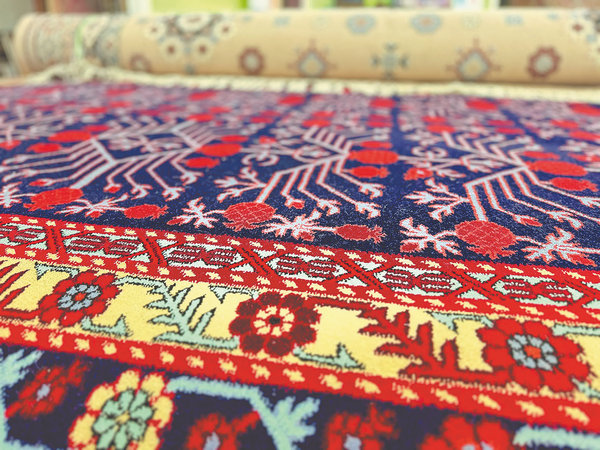
Traditional handmade carpets in Xinjiang feature intricate patterns and vibrant colors. [Photo by XING WEN/CHINA DAILY]
"We have to constantly adapt to new trends as the patterns and colors favored by young people are very different from those preferred by the older generation," he says.
Compared to the traditional carpets with their bright, diverse colors and intricate patterns, today's consumers prefer simpler designs and low-saturated colors, he adds.
His own living room is adorned with a large off-white carpet with a simple pattern while his bedroom features a carpet older than himself.
"The old one is a wedding gift from my grandparents to my parents. It is my most cherished carpet."
Every year, he takes Hotan handmade carpet products to expos across the country to seek new sales channels and exchange ideas with peers on new designs.
For example, to echo this year's zodiac sign — the dragon — the company collaborated with a designer from Tianjin in North China to create a carpet featuring the mystical creature as the main image.
Despite his factory having a steady stream of orders, including from customers in countries like Japan, the United States, Portugal, Spain and Australia, he remains concerned about the shortage of backup designers.

Traditional handmade carpets in Xinjiang feature intricate patterns and vibrant colors. [Photo by XING WEN/CHINA DAILY]
Cultivating young designers
Ilham is the only experienced and stable designer in the company. As he ages, he has started working remotely from home.
Pei is also concerned that the lack of young designers is a challenge for the sustainable development of the handmade carpet industry.
He says traditional carpet patterns were passed down orally by craftspeople. In the 1970s, these patterns were summarized and standardized.
In the 1980s, Pei studied traditional carpet patterns systematically for three years in Hotan.
"My teacher told me to be careful with every stroke. In those years, I spent my mornings drawing patterns and afternoons interning in the workshop learning about every aspect of carpet weaving," he recalls.
"This craft requires years of practice to gain experience."
Nowadays, carpet designer training sessions are regularly held but are just 10-day crash courses.
"Each training period is short and most participants come from private companies and might leave before the next session starts, making it hard to cultivate young designers effectively," Pei points out.
For instance, carpets shrink after their first wash. Designers must estimate the shrinkage rate based on the size of each carpet. The higher the carpet density, the lower the shrinkage rate. These require a designer to invest a significant amount of time and effort to learn and master.
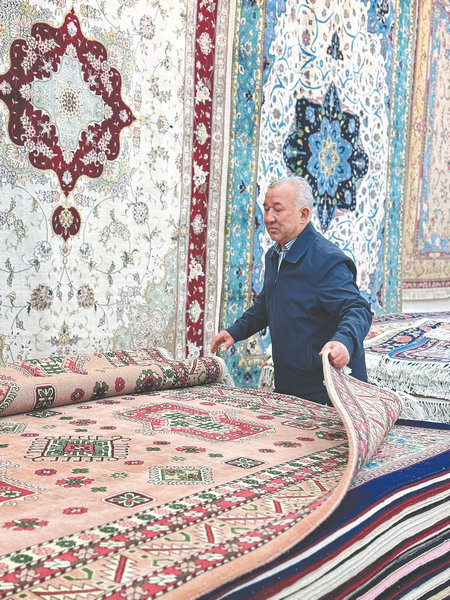
Ilham Jumar, 63, has been designing handmade carpets for over four decades. [Photo by XING WEN/CHINA DAILY]
Pei has been a guest professor at institutions, such as Xinjiang Arts University, where he teaches students about the aesthetics behind Xinjiang handmade carpets, hoping to ignite the younger generation's interest in this ancient craft.
Qadirdin Muhabbat, 34, chairman of Hotan's handmade carpet industry association, is working to find new opportunities for handmade carpets.
The son of an established designer, Qadirdin remembers waking up every day to see his father up and drawing patterns. His parents run a carpet factory.
He graduated from Jimei University in Xiamen, Fujian province, in 2016 and returned home, torn about whether to take over the family business.
Later, he had the chance to study carpet design at Xinjiang Arts University for three months.
"I learned about the origins and meanings of patterns commonly seen on Hotan carpets. People often express their wishes through these patterns," he says. For example, wave patterns reflect local people's desire for water — Hotan is located on the edge of the Taklimakan Desert.
"I suddenly felt that carpet had a life of its own," he says. This realization led him to join the industry.
Qadirdin now runs social media accounts on Douyin and Xiaohongshu, using beautiful images and explanatory videos to raise awareness about Hotan's handmade carpet.
He highlights the advantages of handmade carpets and teaches viewers how to distinguish between machine-made and handwoven pieces.
"I hope that when people think of Hotan, they not only think of the renowned Hotan jade but also of its carpets," he says.
Contact the writers at xingwen@chinadaily.com.cn







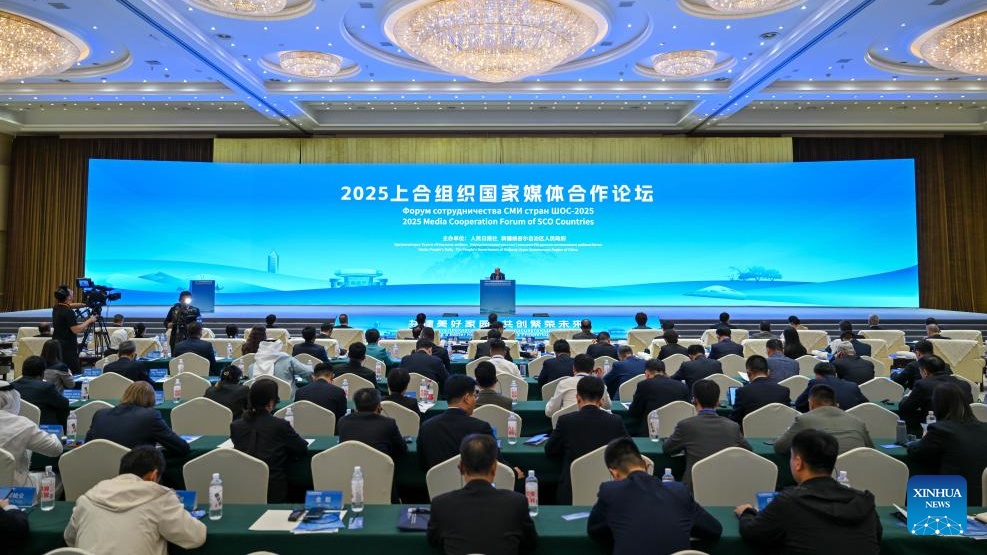





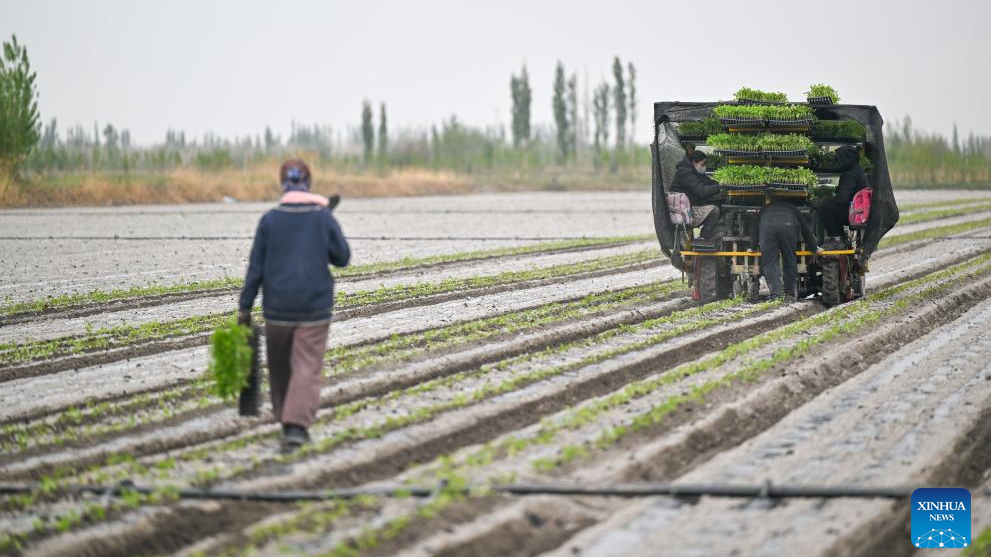



.png)
